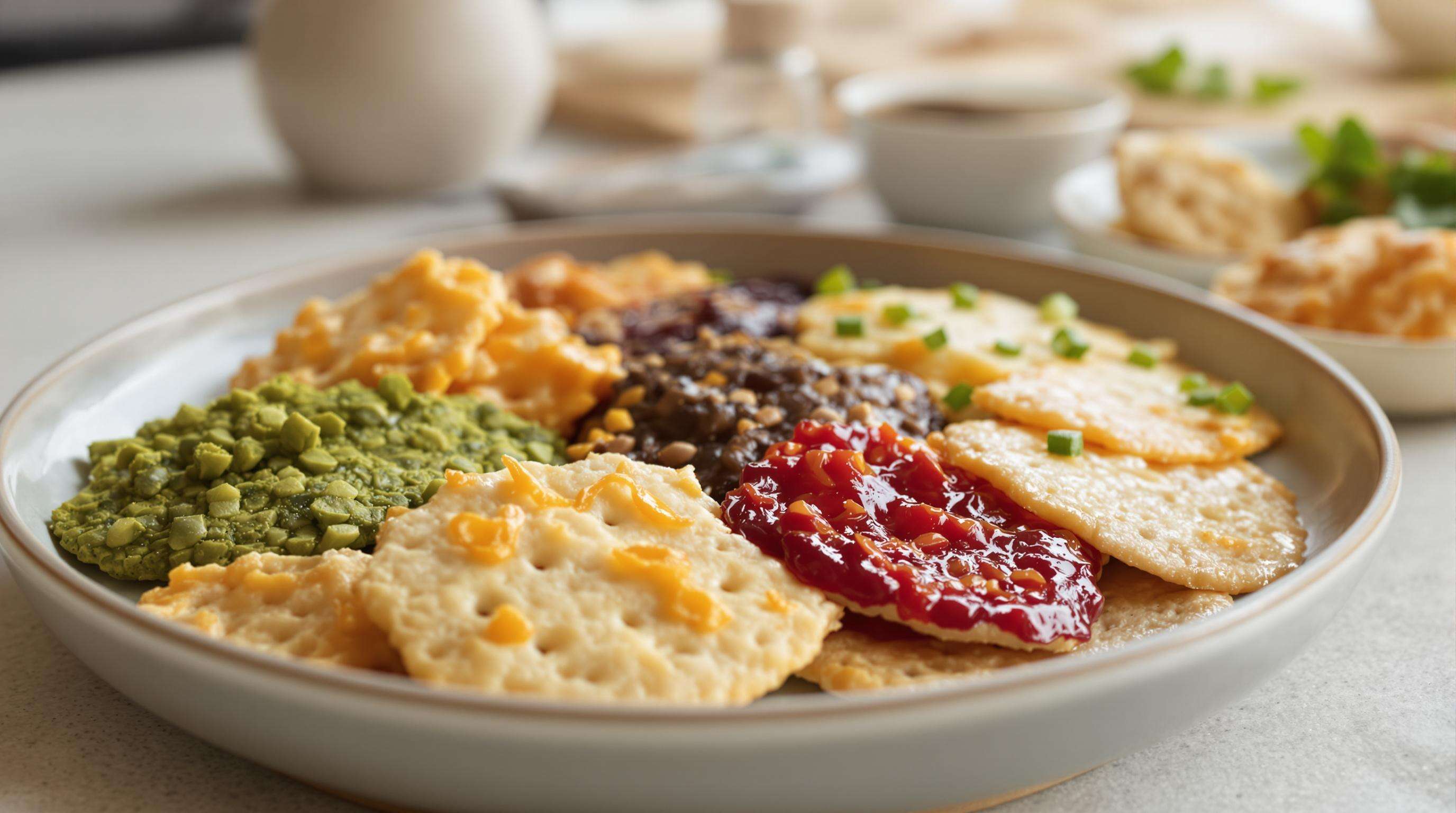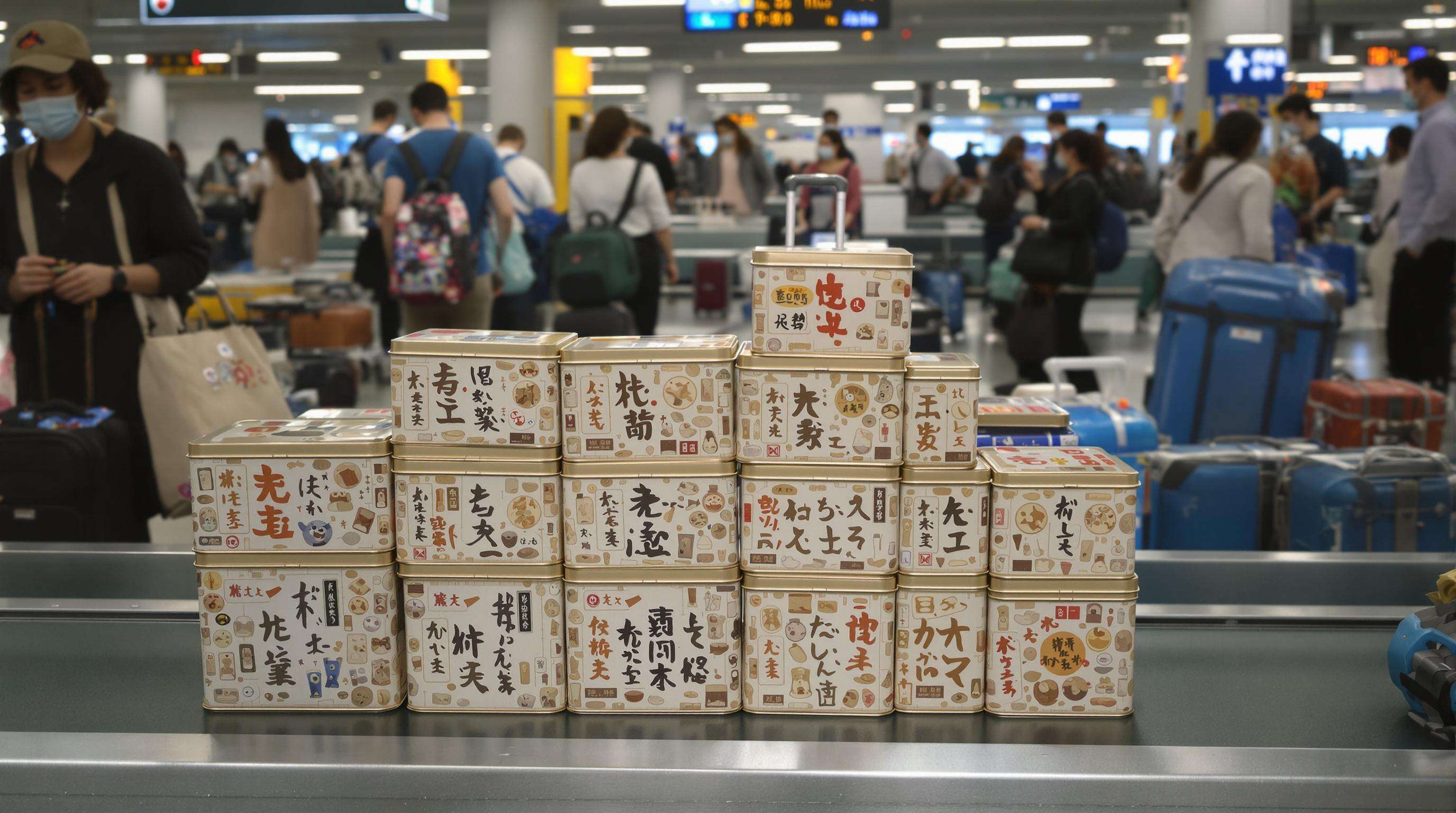Tamu berkerumun di sekitar baki saji bambu dalam hitungan menit ketika sebuah pesta taman di Kyoto tahun lalu mengganti canapé biasa dengan senbei buatan tangan. Acara tersebut difoto oleh fotografer acara yang sengaja hadir untuk mendokumentasikan senyum spontan penuh kegembiraan dan nostalgia, terutama dari kelompok usia muda yang belum pernah merasakan camilan renyah dari beras ini sebelumnya. * Menurut Perencana acara, pergantian makanan jari biasa dengan senbei premium meningkatkan percakapan di meja sebanyak 37% (Japan Hospitality Survey 2023). Pola panggangan senbei yang rumit serta kerenyahan yang memuaskan memberikan nuansa suasana hati seperti makanan penghibur yang unik.
Festival diplomat budaya papan atas Tokyo, para tamu internasional bertukar cerita tentang dialek senbei—dalam dua belas bahasa—sambil menikmati Imo Senbei yang lezat. (Selain itu, cuitan tersebut kemudian memiliki versi lain, yang paling sukses adalah sebuah artikel blog oleh seorang sommelier Chile yang membahas penggunaan senbei rasa udang sebagai pembersih langit-langit mulut untuk mencicipi anggur, yang kemudian dibagikan sebanyak 28 ribu kali di media sosial.) Perbedaan tekstur camilan ini—rempah-rempah yang renyah namun hancur perlahan—menjadi topik pembicaraan hangat di kalangan pelaku industri makanan.
Senbei (せんべい) adalah standar Jepang untuk camilan kerupuk beras, dan jauh lebih dari sekadar camilan. Camilan gurih yang renyah ini dibuat menggunakan beras ketan atau tepung beras non-ketan yang dicampur cairan lembab dan terkadang minyak. Adonan kemudian diproses dengan cara dipanggang perlahan, dioven, atau digoreng dalam minyak banyak, lalu diberi hiasan berupa bahan-bahan yang kaya umami—seperti kecap asin di sini, gula yang dikaramelkan di sana. Setiap daerah memiliki variasi tersendiri yang menghasilkan berbagai tekstur, mulai dari yang renyah hampir transparan hingga tebal yang memuaskan, dan sering kali dibungkus dengan rumput laut nori yang mengandung rasa umami yang membuatnya ketagihan. Keberagaman ini menjadikan senbei sebagai semacam "kanvas kuliner," dengan inovasi modern pada senbei yang kini mulai diterima dalam kehidupan camilan sehari-hari.
Senbei memiliki makna budaya yang mendalam di seluruh Jepang, sejak abad ke-8. Makanan ini melambangkan omotenashi (keramahan), sering disajikan dengan teh untuk menunjukkan rasa hormat kepada tamu atau pada acara khusus seperti Tahun Baru. Penelitian (2023) menunjukkan bahwa senbei dipertukarkan pada sebagian besar acara sosial di Jepang. Perbedaan regional semakin menambah pentingnya makanan ini—tipis seperti kertas ala Kansai berbeda dengan irisan yang lebih tebal yang populer di utara Jepang, di mana setiap gaya mencerminkan tradisi kuliner lokal. Warisan lezat ini membentang melintasi generasi, muncul dalam upacara leluhur maupun pesta modern.
Senbei gaya lama hadir dalam berbagai tekstur dan rasa—jenis yang dilapisi shoyu dengan rasa gurih umami sudah lebih dulu diproduksi, sementara versi yang dibungkus nori memberikan sedikit kesan cita rasa laut. Keistimewaan daerah seperti Hachinohe senbei berbahan gandum dari Aomori, atau senmochi berkarbonasi dari Hyōgo mencerminkan pendekatan khas kerajinan tangan. Bagi penyuka rasa pedas, varian togarashi menawarkan kepedasan cabai—dan sebagai inovasi modern, versi yang ditaburi bubuk keju atau dilapisi cokelat pun kini menjadi alternatif camilan berbahan dasar beras ini.

Produsen modern juga telah mendorong batasan produk di luar kecap asin dan rumput laut: Senbei diberi rasa dengan cita rasa global seperti minyak truffle atau matcha. Versi fusion lainnya juga mencakup campuran wasabi-cheddar serta balutan berbasis buah seperti lychee atau sitrus yuzu. Cita rasa yang direka ulang ini berkontribusi pada pertumbuhan ekspor terbaru berdasarkan data dunia 2023, yang menggabungkan hal baru dengan fondasi khas kue beras—tetap mempertahankan kerenyahan, namun menarik pasar baru dengan bumbu seperti paprika asap sakura atau miso-sawi putih.
Wilayah prefektur di Jepang menciptakan garis keturunan kripik beras yang unik—Kansai menghasilkan versi lengket yang lembut, sementara Kyūshū menawarkan varian berbasis tepung gaya barat yang memberikan sensasi mulut hangat dan renyah. Hokkaido lebih banyak menggunakan infus makanan laut dengan esensi cumi kering, sedangkan Niigata memproduksi versi yang lebih minimalis berupa cakram garam panggang. Perbedaan regional penting tergantung pada bahan dasar: resep gaya utara menggunakan biji beras yang dipanggang, memberikan nuansa hangat dan tanah; sementara versi Okinawa mencampurkan ubi jalar ungu, menghasilkan adonan berwarna cerah.
Pasangan tak terduga ternyata melengkapi senbei dengan baik—cokelat hitam meleleh memperkuat rasa manis rumput laut yang karamelisasi, sementara selai jeruk nipis mengurangi panas pedas togarashi. Minuman berkarbonasi juga meningkatkan tekstur: minuman berbuih memberikan kontras pada lapisan miso yang kaya, sementara anggur sparkling mencerminkan ringan dan renyahnya senbei.
SENBEI Origins Kerupuk beras Senbei sama lezatnya dengan asal usulnya, karena makanan ini berasal dari permulaan yang sakral lebih dari 1.000 tahun lalu berupa persembahan beras bergaya Tiongkok yang dipersembahkan dalam upacara Buddha. Pada masa Edo di Jepang, los pedagang makanan mengubah seni pembuatan senbei dari sekadar persiapan dengan memanggang remahan beras ketan secara sederhana menjadi camilan gurih yang tersedia di luar kuil-kuil. Perkembangan ini membuka jalan bagi penggunaan senbei dalam berbagai festival musiman (termasuk Shōgatsu [Tahun Baru]) dan festival lokal matsuri, di mana pertukaran senbei menjadi simbol semangat komunitas yang membuatnya. Penemuan kuliner modern memperluas pemanfaatannya: rasa gourmet dan variasi pun masuk ke dalam rangkaian acara pernikahan dan ajang internasional, menyatukan akar spiritual kuno dengan kesempatan sosial modern.
Antropologi pangan kontemporer mengungkapkan bagaimana senbei menciptakan ikatan emosional yang mendalam dalam jenis hubungan ini. Penelitian menunjukkan bahwa atribut multisensori mereka—terutama rasa nostalgia yang dipicu oleh tekstur dan kenangan berdasarkan rasa—meningkatkan dinamika kelompok sebesar 40% dibandingkan camilan standar. Dalam lingkungan kelompok yang ramai, suara renyah khas mereka mampu memancing percakapan santai dan anekdot dari orang asing, sedikit demi sedikit meruntuhkan tembok sosial. Resonansi ini disebabkan oleh asosiasi psikis dengan perayaan masa kecil dan identitas budaya, menurut para ilmuwan kognitif.
Transisi Senbei dari camilan favorit di rak toko hingga menjadi ikon budaya pop berbarengan dengan penampilannya dalam beberapa seri anime lain seperti Mashle: Magic and Muscles dan Oshi no Ko. Dalam seri-seri tersebut, senbei umumnya digambarkan sebagai makanan pokok para pahlawannya, dan minat penonton Eropa mulai terpicu. Ketika lagu tema Oshi no Ko yang berjudul "Idol" menjadi viral pada tahun 2023, pengguna TikTok mulai menggabungkan tantangan tarian dengan video mencicipi senbei—dengan total lebih dari 1,2 juta tag di seluruh dunia.
Penampilan cameo camilan ini dalam Spy × Family , di mana sebuah USB berbentuk senbei memicu ketegangan alur cerita, semakin mengaburkan batas antara tradisi kuliner dan narasi di era digital. Kini, 63% peserta konvensi anime melaporkan secara aktif mencari senbei setelah melihatnya dalam serial favorit mereka.

Sinergi budaya pop ini mendorong pertumbuhan ekspor senbei sebesar 214% secara year-over-year pada tahun 2023, dengan Amerika Utara dan Eropa menyumbang 71% dari seluruh pengiriman. Analis industri mengaitkan lonjakan ini pada tiga faktor utama:
Organisasi Pariwisata Nasional Jepang mencatat bahwa 23% pengunjung tahun 2023 memasukkan toko senbei dalam agenda perjalanan mereka — sebuah tren yang menunjukkan transformasi camilan ini dari makanan lokal menjadi artefak budaya yang dikenal secara global.
Pilih varietas senbei terbaik, dan suasana bermain kartu tiba-tiba terasa seperti pertemuan kecil yang menyenangkan dengan budaya. Fokuskan pada keseimbangan tekstur (renyah, lembut, garing) dan profil rasa dasar—rasa asin dari saus kedelai, biji wijen yang gurih, serta rasa karamel yang manis. Tambahkan sentuhan lokal seperti senbei zunda-mochi dari Sendai atau kerupuk berisi tiram dari Hiroshima untuk memulai percakapan. Bagi selera petualang, tambahkan 1-2 variasi fusion (wasabi-coklat atau matcha-dusted). Susun di atas nampan bertingkat dengan hiasan bermotif tanaman dan daun yang bisa dimakan sebagai pemisah. Paket yang dirancang dengan baik ini mengilhami ide berbagi dan rasa bangga terhadap sejarah camilan Jepang—meningkatkan interaksi pengunjung sebanyak 65% dengan pilihan bertema (Culinary Tourism Journal, 2023)
Ubah kebiasaan makan santai menjadi pengalaman seru dengan nuansa 'terroir' di stan senbei. Pasang bar glasir DIY dengan saus tare tradisional, serta variasi global seperti madu-sriracha dan reduksi balsamic. Padankan tiap stan dengan catatan rasa dan dongeng budaya tentang peran senbei dalam berbagai acara festif di Jepang. Untuk perayaan berbasis teknologi, buat kuis rasa yang terhubung dengan kode QR agar membantu tamu menjelajahi kekhasan daerah. Tampilkan juga tutorial pemanggangan yang memperkenalkan teknik press keramik tradisional—ini menjadikan penonton pasif sebagai pencipta aktif, sekaligus menambah topik pembicaraan tambahan. Format imersif seperti ini, menurut riset, meningkatkan persepsi nilai acara hingga 40%, sekaligus memperkuat hubungan lintas budaya melalui kisah yang dapat dimakan.
Senbei adalah kudapan tradisional Jepang yang dibuat dari tepung beras ketan atau non-ketan, dengan berbagai macam topping. Makanan ini dikenal karena teksturnya yang renyah dan rasanya yang gurih.
Senbei modern kini dikreasikan dengan cita rasa global seperti minyak truffle atau matcha, dan beberapa varian memiliki lapisan unik seperti campuran wasabi-cheddar atau cokelat. Rasa baru ini memperluas daya tarik pasar camilan ini.
Popularitasnya terutama disebabkan oleh kemunculan dalam anime dan media, kehadiran rasa global yang unik, serta minat budaya terhadap makanan Jepang.
Senbei sering disajikan dalam acara budaya dan perayaan di Jepang. Makanan ini merupakan simbol dari omotenashi (keramahan) dan sering muncul dalam perayaan Tahun Baru, pernikahan, dan lainnya.
 Berita Terkini
Berita Terkini